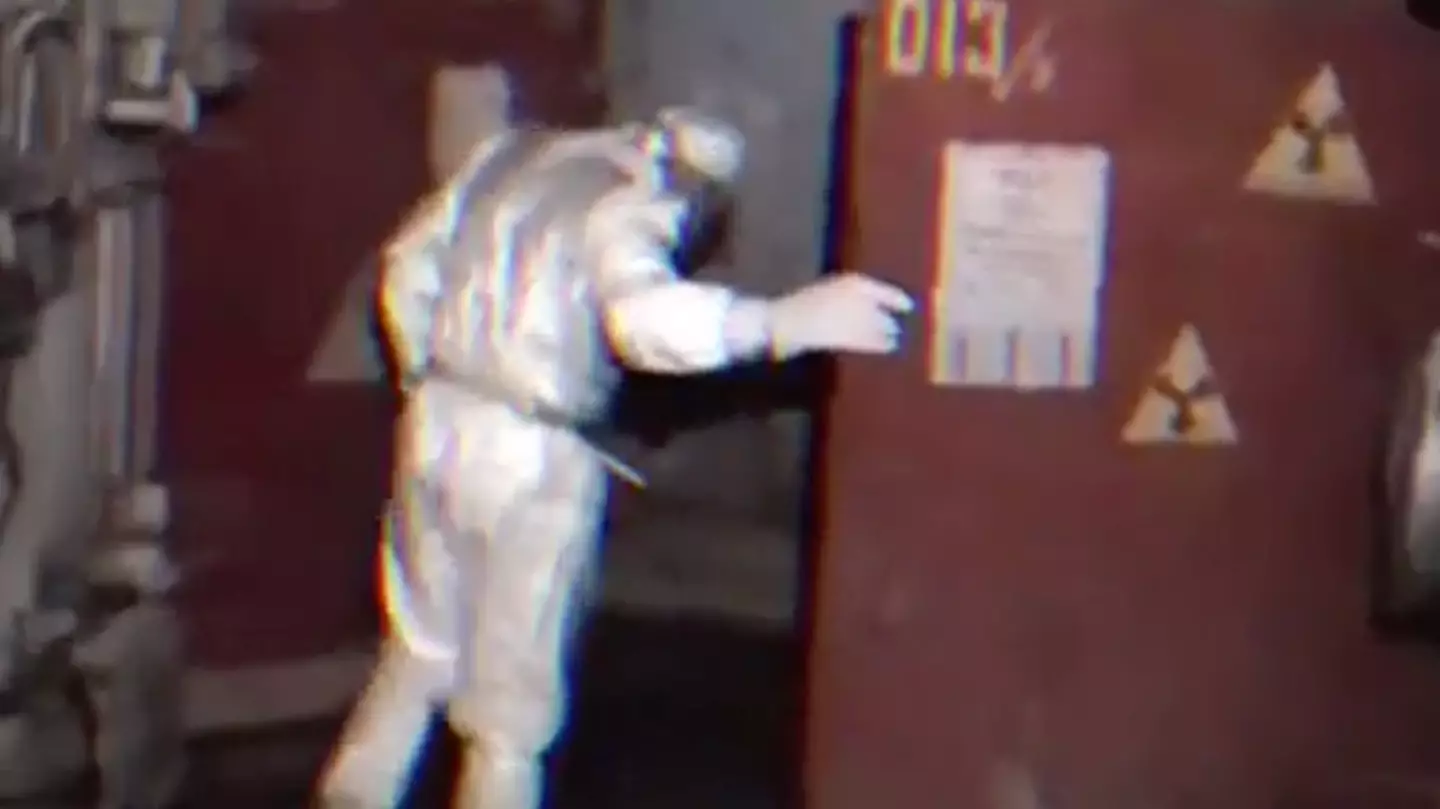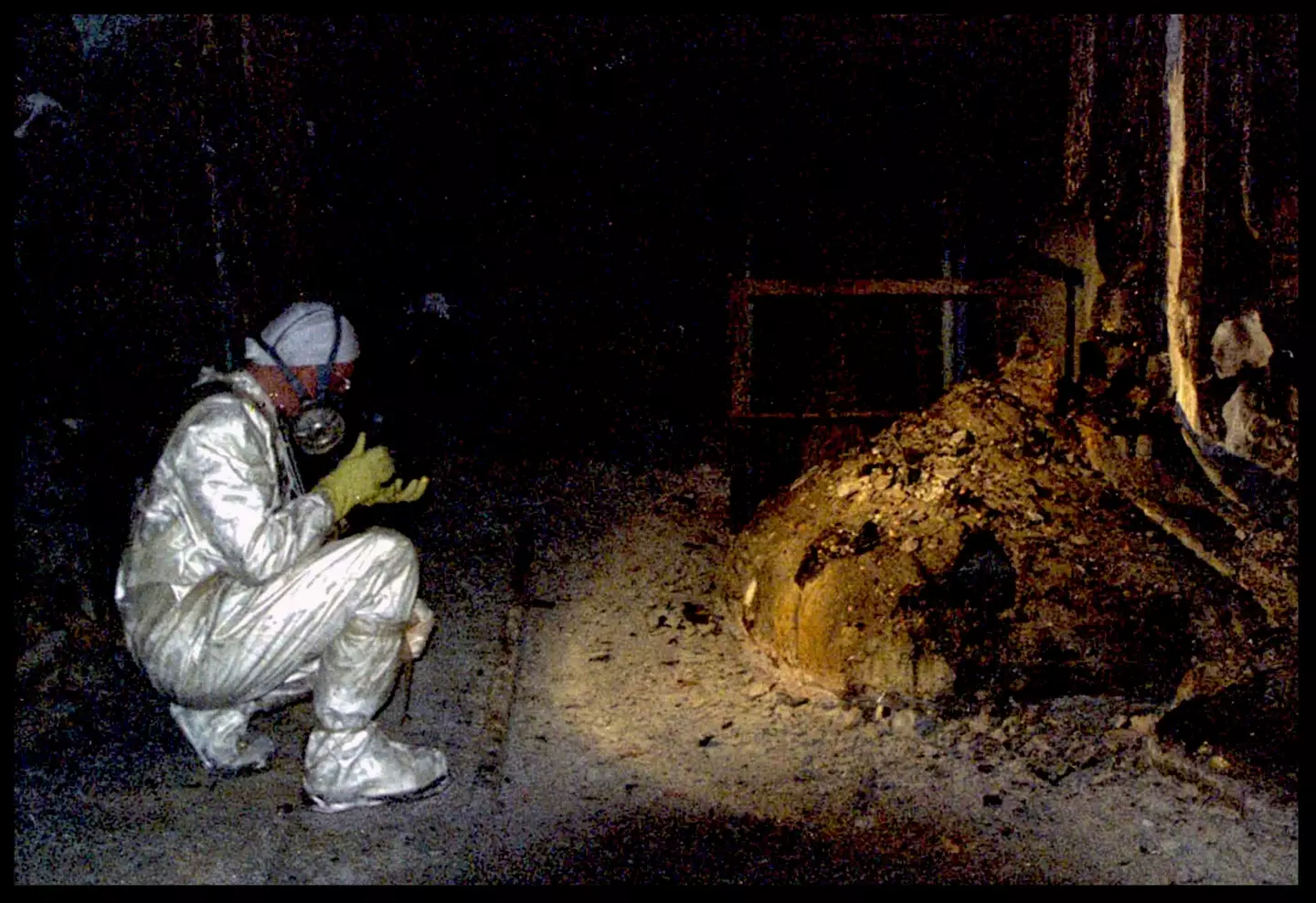
Corium is really a mixture of many other things melted together, including molten concrete, sand, steel, uranium and zirconium.
Melting together after the radioactive disaster of 1986, these elements all formed a wrinkled mass which is known as the ‘Elephant’s Foot’.
It is one of the most dangerous objects on the planet, and you will start to feel the effects of it after just a few seconds of standing next to it.

That’s part of what used to be the core of a nuclear reactor (Universal History Archive/Universal Images Group via Getty Images)
Despite the dangers posed by the Elephant’s Foot, people have gone close to the deadly object while working in the ruins of Chernobyl’s Reactor 4.
The disaster turned the place into a wreck, and among the debris is the massive lump that is the Elephant’s Foot, with footage showing it in the bowels of the destroyed nuclear power plant.
A very famous picture of the Elephant’s Foot was taken in 1996 by Artur Korneyev, who is no longer allowed in Chernobyl due to his exposure to radiation from the mass of corium.
Part of the reason for that is the damage the radiation has done to him, with him having developed cataracts and other health issues due to his exposure to the Elephant’s Foot.
It’s coming up to three years since Russian dictator Vladimir Putin sent troops into Ukraine, causing the largest and deadliest European conflict since the Second World War.
In addition to invading Ukraine, massacring civilians and perpetuating a war that has cost thousands of lives, Russian troops also attacked the remaining facilities at Chernobyl before they were driven off by Ukrainian troops.
The staff working at the power plant had to steal fuel from the invaders to keep generators running, having warned that it ‘could have been catastrophic’ otherwise.
Chernobyl is still dangerous ground to this day, and some Russian troops who dug in around the area may have been exposed to ‘significant doses’ of radiation.


